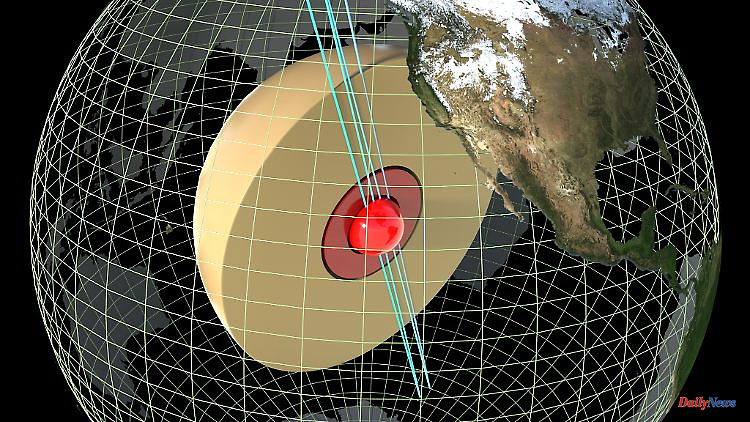The earth has a crust, a mantle and a core, an inner and an outer - this has been known by science for a long time. But that's probably not all: With the help of earthquake waves, a research team comes across another, previously unknown area.
The inner core of the earth probably consists of two distinguishable parts: From the analysis of earthquake waves, Australian geologists find evidence of an innermost core with a diameter of about 650 kilometers. Accordingly, the speed of the waves changes as they pass through the innermost core of the earth. This is reported by Thanh-Son Pham and Hrvoje Tkalčić from the Australian National University in Canberra in the journal "Nature Communications".
As early as the beginning of the 20th century, scientists used recorded earthquake waves to divide the interior of the planet into crust, mantle and core. In the 1930s, the distinction between the inner and outer core of the earth was added. Later it became clear that the inner core is solid and the outer core is liquid. It was also shown that the moving carriers of electrical charge in the outer core of the earth generate the earth's magnetic field.
Around 20 years ago, researchers first expressed the assumption that the inner core of the earth could consist of two different areas. The current study now supports this suspicion.
Pham and Tkalčić examined data from around 200 earthquakes with a magnitude of 6 and above over the past decade. "By developing a technique to amplify the signals recorded by dense networks of seismographs, we have for the first time observed seismic waves traveling up and down the Earth's diameter up to five times," Pham said in a statement from his university.
The waves sometimes pass through the earth's core, are partially reflected on the earth's surface on the other side of the earth, traverse the earth's core again and are reflected several times. However, the authors only found these multiple reflections in some of the 200 analyzed earthquakes.
However, this data clearly showed that the propagation times of the earthquake waves differed depending on the angle at which they propagated through the earth's interior in relation to the earth's axis: the so-called P waves were about four percent faster if they ran from pole to pole, for example , and 3.4 percent faster when crossing the Earth in the plane of the equator. When a property depends on direction in such a way, science calls it anisotropic.
According to current knowledge, the entire inner core of the earth consists mainly of iron, about one-fifth of nickel and traces of other elements. However, the innermost core of the earth differs from the rest of the inner core by the significantly higher anisotropy. According to Pham and Tkalčić, the measurement data best fits a model with an innermost core of the earth, which has a diameter of around 650 kilometers.
The entire inner core of the earth has a diameter of about 2400 kilometers. "This inner core is like a time capsule of Earth's evolutionary history - it's a fossilized record that serves as a gateway to the events of our planet's past," says Tkalčić.
Christoph Sens-Schönfelder from the German Research Center for Geosciences (GFZ) in Potsdam also assumes that the differences found within the inner core have geological causes: "The new observations allow theories about the origin and growth of this mysterious part of the Earth."
In general, the expert praises the work of the Australian scientists: "Through the very careful analysis of modern seismic network recordings of selected earthquakes, Thanh-Son Pham and Hrvoje Tkalčić have extracted exotic signals that have remained undiscovered until now."












